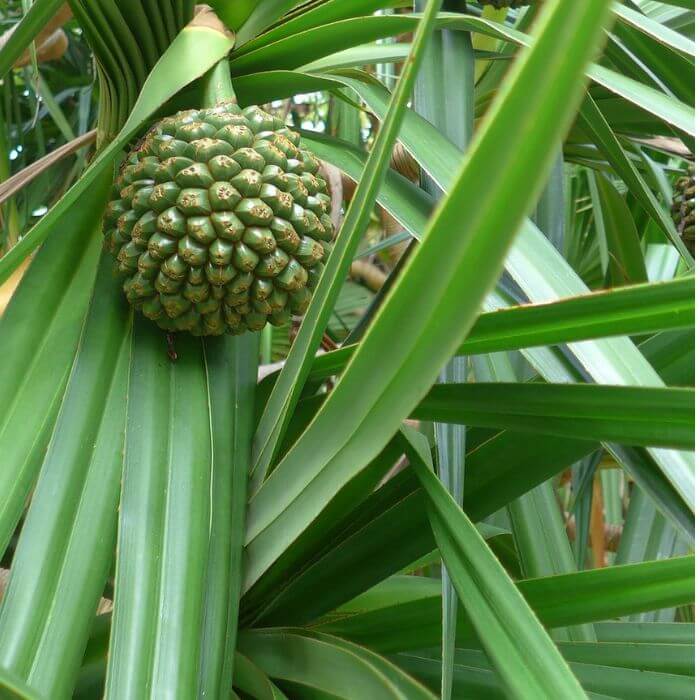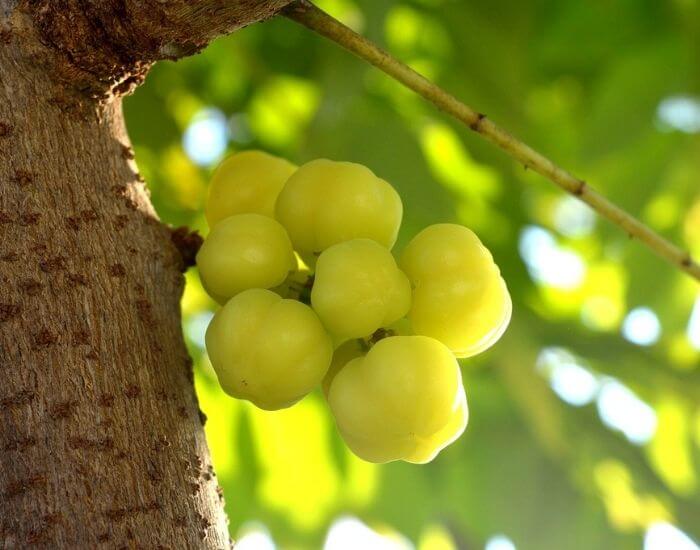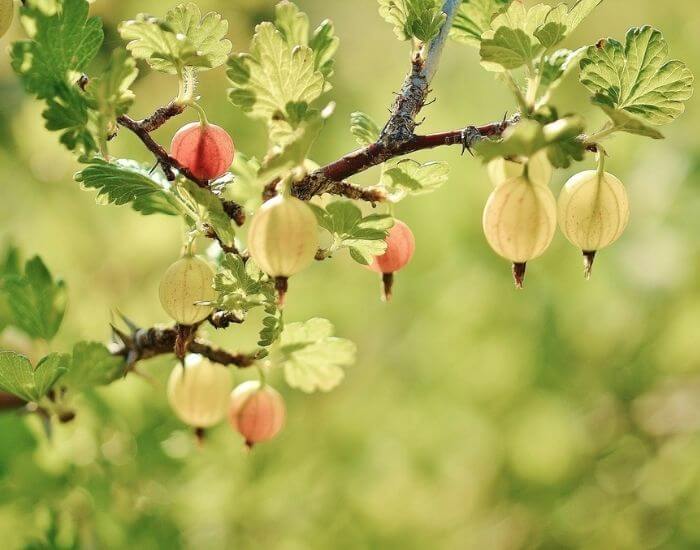Hala fruit or thatch screwpine fruit, scientifically called Pandanus tectorius, is a tropical delight that holds cultural and culinary significance in many regions around the world.
With its unique appearance and versatile uses, this fruit has become increasingly popular among food enthusiasts and health-conscious individuals seeking new exotic flavors. Native to Southeast Asia and parts of Australia, the hala tree thrives in warm climates and produces large clusters of vibrant orange fruits known for their sweet aroma and distinct taste.
In this article, we will explore the fascinating characteristics of this orange fruit, its nutritional benefits, various culinary applications, and how it has become an integral part of local traditions and cuisines.
Where does hala fruit come from?
This fruit is native to the Pacific Islands and Southeast Asia. It grows on a tree-like plant that can reach up to 10 meters in height. The fruit itself is round and about the size of a pineapple, with a rough exterior made up of hexagonal sections.
Hala fruit trees thrive in tropical and subtropical climates, favoring sandy or rocky soils near coastlines. They are commonly found in countries such as Fiji, Hawaii, Samoa, Tonga, and Tahiti. These regions provide the ideal conditions for the growth and development of hala fruit due to their warm temperatures and abundant rainfall.
In addition to its natural habitat, hala fruit has also been introduced to other parts of the world with similar climates. This includes countries like Australia, India, Sri Lanka, Malaysia, and even some coastal regions of Africa.
Hala fruit color

One of its most distinctive features is its vibrant color. The hala fruit comes in various shades; orange-yellow, red-orange, green, and golden yellow. These striking colors make the fruit visually appealing and add to its overall allure.
The color of the hala fruit not only enhances its aesthetic appeal but also serves as an indication of its ripeness. As the fruit matures, it undergoes a gradual change in color, transitioning from a pale green to a rich golden or orange-red hue. This change in color signals that the hala fruit is at its peak ripeness and ready to be consumed.
In addition to their beautiful hues, the different colors of hala fruits can also have significance in certain cultures. In some Pacific Island communities, for example, yellow or golden-colored hala fruits are often associated with prosperity and good luck. This cultural symbolism adds an extra layer of meaning to the already captivating colors of this exotic tropical delight.
How to tell if hala is ripe
What does hala look like? It is oval or round in shape, about 3.1-7.8 inches in diameter. The hala resembles a pineapple with spiky protrusions, which may discourage some from exploring its culinary possibilities. However, those who dare to taste it are rewarded with a burst of flavors that will leave their taste buds craving for more.
One way to tell if hala fruit is ripe is by examining its color. A ripe hala fruit will have a golden-yellow or orange-red hue, indicating that it is ready to be eaten. Avoid fruits that are still green or have patches of green as they are not fully matured yet.
Another method to determine the ripeness of hala fruit is by gently squeezing it. A ripe fruit will yield when squeezed, similar to how a ripe avocado feels when pressed.
Lastly, you can also rely on your sense of smell to determine if the hala fruit is ripe. A fully ripened hala fruit emits a sweet fragrance.
Related Read: Check H fruits
How to prepare fruit

Hala fruits are made up of carpels or keys (over 100). When the fruit is ripe, these keys are easy to remove with the hand. Each key is smooth on the outside and when cut reveals one or two brown seeds surrounded by bright orange flesh.
Seeds are edible and can be roasted for added flavor. The orange flesh of the hala is stringy. So, it’s best consumed by chewing the flesh, sucking the juice and discarding the remnants.
Nutritional facts
Hala fruits are rich in various nutrients and offer several benefits. One of the major nutritional benefits is their high fiber content.
Additionally, hala fruits are a good source of essential vitamins like vitamin C and A. Furthermore, these fruits are low in calories and fat. Their natural sweetness provides a satisfying taste without adding excessive calories to your daily intake.
Incorporating hala fruits into your diet can be a nutritious way to enjoy tropical flavors while reaping the numerous benefits they offer.
When is hala in season
When it comes to the seasonality of hala fruit, it is typically available all year round in its native region.
Taste
What does hala fruit taste like? The taste can be described as a unique combination of flavors. The flesh of the fruit is soft and juicy, similar to that of a pineapple or mango. It has a mildly sweet taste with tropical notes. Some people compare it to the flavor of jackfruit.
How to eat
One popular way to eat hala fruit is by consuming it fresh. Simply cut open, pick one key, you can peel the exterior and eat. The texture of the hala fruit is similar to that of ripe mangoes, making it a refreshing treat on hot summer days.
Another way to enjoy hala fruit is by incorporating it into various recipes. The sweet and tangy flavor of pandanus can be used in desserts like cakes and pies. You can also try adding chopped this fruit to salads or using it as a topping for yogurt or ice cream for an added burst of tropical goodness.
Making drinks
One way to drink a pandanus tectorius fruit is by blending it into a smoothie or a milkshake. By combining fresh fruit juice with yogurt, ice cream or your favorite milk alternative, you can create a creamy and indulgent beverage that highlights the natural flavors of this exotic fruit.
This makes for a perfect breakfast option or an afternoon treat that not only satisfies your cravings but also provides you with essential nutrients found in hala fruit.
Experimenting with different ingredients such as bananas, pineapple or mango can add additional layers of flavor to your hala smoothies and make them even more enjoyable.
Storage
When it comes to storing hala fruit, there are a few important considerations to keep in mind.
Firstly, it’s best to store hala fruit at room temperature until fully ripe. This allows the fruit to continue ripening and develop its sweet flavor. Once ripe, you can store it in the refrigerator to prolong its shelf life for up to one week. However, make sure you wrap tightly in plastic wrap or place it in an airtight container before refrigerating it.
Where to buy
If you’re wondering where to find this exotic fruit, there are several options to consider. Firstly, this pandanus fruit can be found in its natural habitat in regions such as Southeast Asia, Polynesia, and Hawaii.
These areas boast the perfect climate for the growth of hala trees, which bear the fruit. Visitors to these regions can explore local markets or even pick hala fruits directly from trees if they have access.
Alternatively, for those who don’t live in or have access to these tropical regions, it’s still possible to enjoy hala fruit. Many specialty grocery stores and Asian markets now stock a variety of exotic fruits including hala.
source: ncbi
Hi There,
My name is Jenny. I’m the Chief Editor at Try Green Recipes and besides making yummy and healthy foods for my kids, grandkids, and friends. I’m new to the blogging world but I believe what I have to share is unique and will bring joy to your home. If you are adventurous and want try something tasty, let’s get started.

